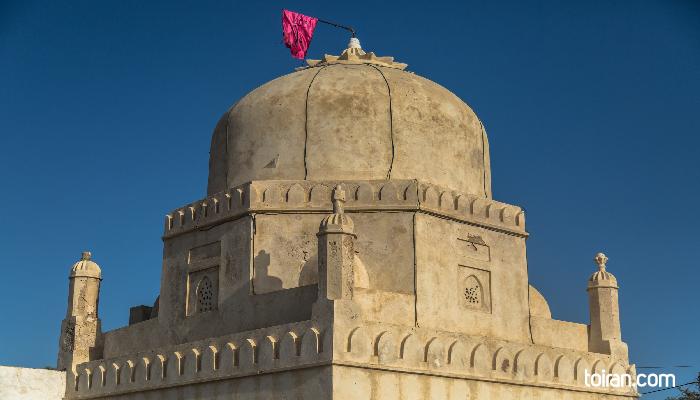The tomb of Seyyed Mohammad known as Seyyed Gholam Rasoul is a popular pilgrimage site in Chabahar frequented by Indian Muslim and the people of Sistan-Baluchestan Province. The architectural features of the building suggest it was built in the Seljuq era (1038-1118) and wall paintings and other decorations were added in the Safavid era (1501–1736). There are four short minarets at the four corners of this pilgrimage site and its dome has red, blue, white and yellow decorative floral and geometric bands on the inside. A wooden chest covers Seyyed Mohammad’s grave at the center of the structure and a wooden Hejleh (a structure used for the union of newlyweds on their wedding night which is also used to commemorate young men who have died without ever consummating a marriage) with geometric Baluchi decorations has been placed over the chest. Four lightwells provide lighting for the tomb chamber.
It is believed that Seyyed Gholam Rasoul was a Muslim of Indian origin who was set to marry a woman from Chabahar in a trip to the city. He fell seriously sick on the night of his wedding. As his last wish Seyyed Gholam Rasoul, who was dearly loved by the people of Chabahar, asked that instead of mourning his death the people of Chabahar honor his life by holding 10 days of celebrations. To this day, every year, the people of Chabahar gather at Imamzadeh Seyyed Gholam Rasoul three times a day to hold celebrations for 10 days. During the month if Muharram Imamzadeh Seyyed Gholam Rasoul becomes the venue of mourning ceremonies.

